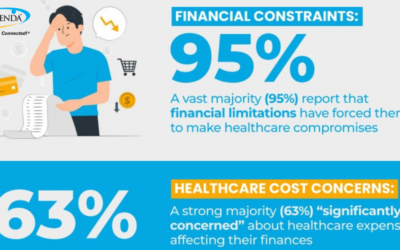The Baby Boomers are known for their strong sense of independence. Eighty is the new sixty but it’s likely that most will need to rely on others as they age. More than 10,000 people turn 65 every day in the US, and they are living longer, healthier lives.
By the year 2020, almost 12 million U.S. citizens are expected to need some type of long-term care, and that number will continue to grow exponentially as the 78 million Boomers approach retirement age and beyond. In many cases, people grow increasingly disabled as they age, but an accident or illness will often result in a sudden need for care.
Are the Boomers prepared financially for long-term care?
Approximately 40 percent of individuals who reach and exceed the age of 65 are expected to enter a skilled nursing long-term care facility at some point in their lifetimes. But many experts suggest that Boomers are not financially prepared for the types of care they will need as they age. Long-term care insurance is one affordable option which may provide payment for future care in a long-term care facility however, less than half of Baby Boomers have taken the necessary steps to provide financially for their care.
A semi-private room in a nursing care facility currently costs an average of more than $80,000 per year, and a private room is more than $91,000. Costs are expected to increase by 4 percent per year over the next five years. Individuals who wish to remain in their own homes can expect to pay about $45,700 annually for full-time home care assistance, with costs expected to increase about 1 percent annually over the next five years.
Experts note that in addition to not being prepared for the costs of long-term care, Boomers often have the misconception that Medicare will cover all their medical expenses. According to the Employee Benefit Research Institute, Medicare only covers about 60 percent of medical care services, which does not include the costs for long-term care.
In-Home Care Options
For individuals who currently require in-home care services, there are a variety of options including home health, hospice and private duty care. According to MedCentral, home health care currently is provided by some combination of:
- Nurse working under a physician’s direction
- Medical Social Services Managers, Case/Care Managers
- Speech, Occupational, Respiratory and Physical Therapists
- Personal care assistants
- Volunteers and clergy
In addition, services provided can include:
- Transportation under special circumstances and nutritional support
- Medication administration, management and necessary supplies
Technology is also key in helping to provide a number of services delivered in the home, often through companies that also provide traditional home health or home care.
Services may include:
- Personal Emergency Response Systems (PERS)
- Medication management
- Video communication
- Room temperature, smoke and carbon monoxide detection
How is the in-home care industry meeting needs?
For a variety of reasons, including the increasing costs of a traditional senior living setting, most seniors prefer and choose to remain in their homes as long as possible. With so many in-home care options available, aging in place has become a viable plan for many seniors.
Read Part #2: Why some seniors choose to age in place





